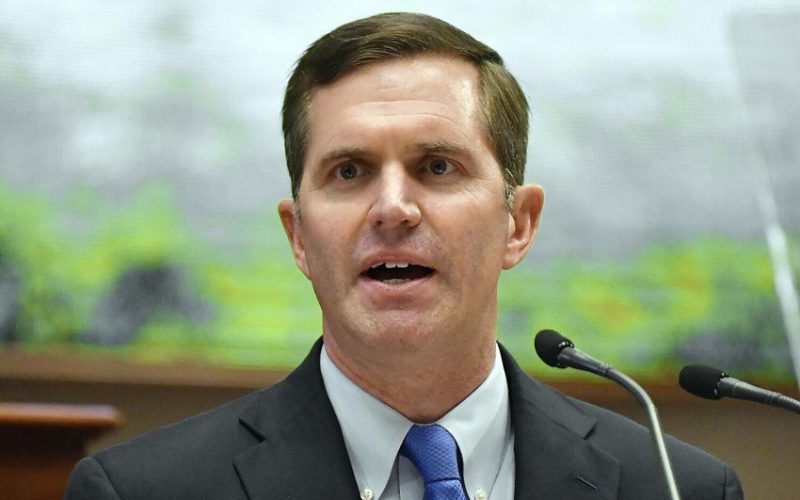Louisville, Ky. — Democratic Governor Andy Beshear signed a bill into law Thursday that will reduce Kentucky’s individual income tax rate from 4% to 3.5%, starting next year. The move, aimed at providing relief for Kentuckians facing high consumer prices, was swiftly passed by the Republican-led Legislature within the first five days of the session.
Beshear, who had pledged to support the tax cut, expressed confidence that the loss in revenue would be balanced out by economic growth. “This move will put more money in your pocket while things cost too much,” he said during his weekly news conference at the Statehouse.
The tax cut, a top priority for Republican lawmakers, is the latest in a series of reductions since the GOP gained full control of Kentucky’s Legislature in 2017. Proponents argue that the reduced tax rate will drive long-term economic growth and population gains in the state, enabling residents to retain a larger portion of their earnings.
However, Beshear acknowledged that the half-percentage-point cut would result in a $718 million annual reduction in the state’s general fund revenues once fully implemented. The general fund, which supports critical services such as education, health care, and public safety, could face significant pressure as a result.
Democratic lawmakers have expressed concerns over the potential for cuts to vital public services, particularly in times of economic downturn. Some critics argue that the lost revenue could jeopardize the state’s ability to adequately fund essential programs.
Despite these concerns, Beshear remained optimistic about the state’s financial stability. “I believe that with the growth we’re seeing in certain areas of revenue, we’re going to be able to manage that,” he said. He pointed to Kentucky’s recent influx of private-sector investments and the addition of new jobs as evidence that the state’s economy is on an upward trajectory. Republican lawmakers, in turn, credit their business-friendly policies for the economic successes seen in recent years.
The state’s general fund revenue has shown growth, with a 4.5% increase in receipts for December 2024 compared to the same month the previous year. Additionally, revenue grew by 1.7% during the first half of the fiscal year that ends on June 30. These figures give some assurance that the tax cut may not have the immediate devastating effects that some fear.
Kentucky’s decision to reduce income taxes mirrors a broader trend seen in several states across the country. Despite the slowing of state revenue growth in many places, lawmakers and governors continue to push for tax cuts, following the lead of former President Donald Trump, who also proposed cuts for individuals and businesses. Most states have already enacted income, sales, or property tax cuts in recent years, but the push for further reductions shows no signs of abating.
The income tax cut in Kentucky follows a gradual reduction in the state’s tax rate that began in 2022. Under a tax overhaul, Kentucky started reducing the individual income tax by half a percentage point each year, contingent on meeting certain revenue benchmarks to ensure the state could maintain essential services.
While the income tax reduction has been lauded by Republican lawmakers, the extension of the state sales tax to more services as part of the 2022 overhaul remains controversial. Critics argue that lower-income families are disproportionately hurt by the increased tax burden on services.
In recent Senate debates, several Republicans voiced their hope that the eventual goal would be to eliminate the state’s income tax altogether.
Beshear’s record on tax cuts is mixed. He supported a previous half-point cut in 2023 but vetoed the broader 2022 tax overhaul, objecting to the extension of the sales tax. However, Republicans overrode his veto, and Beshear’s proposal for a temporary reduction in the state sales tax was unsuccessful. Still, Beshear appears willing to sign off on measures he believes will ultimately benefit Kentucky’s economy in the long run.
As the income tax cut begins to take effect, the full impact on the state’s economy and services remains to be seen. For now, the debate over the long-term consequences of the policy is expected to continue.











